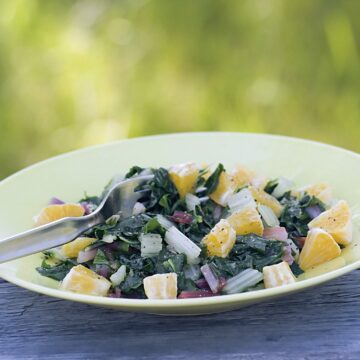When observing nature, we can easily see that life is cyclical and constantly changing. Would it make sense to change our patterns as the seasons do?
According to ancient ayurvedic wisdom, the key to living a healthy and happy life is to live in harmony with the cycles and rhythms of nature. This refers as much to the seasons as to our body types and the rhythms of each day.
Ayurveda means “the study of life” and is rooted in Indian philosophy. It proposes that all manifestations of life come in three different qualities: kapha, pitta, and vata.
Kapha has the qualities of spring – the elements are earth and water.
Pitta has the qualities of summer – the element is fire.
Vata has the qualities of winter – the element is air.
Body types also fall into these three categories. A person might have one dominant quality or a combination of two. Rarely, a person may exhibit all three qualities in equal amounts.
Let’s have a look at the three seasonal body types:
The KAPHA Body Type
In the spring, the earth is heavy from all the water of snowmelt. It rains frequently, there is a lot of mud, and mucus and allergies abound. People who have kapha body types are big-boned and solidly built. They have strength and endurance. They do not need to worry about osteoporosis.
They are often easygoing, deliberate, and methodical in their activities. Their temperaments are even, tranquil, and calm. Kaphas have slow metabolisms and assimilate their food with ease. They do not need to eat much in order to be well nourished. Because weight gain comes easily for the kapha body type, obesity can become a major health concern. Kaphas need to take care of their hearts – it is their weakest organ.
Kaphas do well eating an abundance of vegetables and lighter foods. Foods that have a drying effect like grains are recommended as well. Spices are good, as they can break through congestion and stagnation in the body. Kaphas should go easy on oils and fats. Low-impact physical activities like walking and hiking work well for them.
Kapha imbalances include water retention, obesity and congestion.
The PITTA Body Type
Like summer, pitta people are fiery, passionate, expressive, and competitive. Their physiques are medium-built and muscular. They love sports. Their skin is sensitive and tends to break out in rashes. Their body temperature is high, which makes them sweat easily.
Pittas enjoy cooling foods and drinks. They have an aversion to hot, humid weather and they are easily irritated. Pittas are leader types, enterprising and captivating. They make good public speakers. Pittas are prone to overworking and they burn out easily. They have strong appetites and quick digestion. They need to eat at regular time intervals, and they don’t do well skipping a meal. Their weakest organs are the liver, heart, and stomach.
In order not to overheat, pittas should minimize hot spices and other energetically hot foods, such as meats – especially red meat. Fish and chicken are better choices of animal protein. Beneficial are dark leafy greens and sweet vegetables as well as whole grains. Lettuces and raw vegetables are excellent because of their cooling action.
Pittas need exercise as a form of physical release on a daily basis. Pitta imbalances include a hot temper with outbursts of anger, inflammations, and burnout.
The VATA Body Type
Winter, the coldest season, is dry and windy. The wind can blow without restriction, as the trees are bare. Vata qualities are cold, dry, light, rough, and constantly changing. The vata body type is thin-boned and slender, built with very little body fat. Vatas have quick and sharp minds and tend to worry a lot. Vata bodies are dry, which can manifest in dry skin and constipation. They have a speedy metabolism and a hard time gaining weight. Because their weak intestines do not absorb nutrients effectively, vatas need to eat highly nutritious food. Vatas especially need to nourish the nervous system, colon, and bones.
In order to assist their bodies in nutrient absorption, vatas should prefer cooked vegetables, especially round root vegetables, and cooked whole grains, which also help with bowel function. It is advantageous for vatas to eat small portions of animal protein because of its warming and grounding qualities. Incorporating high-quality oils and fats is also essential, as they balance out dryness.
Recommended are gentle, meditative, and weight-bearing practices like yoga, tai chi, and Pilates, which release nervousness while stimulating the bones to build up strength. Vata imbalances include constipation, osteoporosis, and sensitivity toward cold as well as low stress tolerance.
After reading about these three body types, you probably have a good idea which you most identify with.
Going forward, experiment with eating and exercising according to your ayurvedic body type.
Marika Blossfeldt
Author . Speaker . Coach
https://marikab.com/retreats/
Swiss Chard with Blood Oranges
Print RecipeIngredients
- 2 cups (240 ml) water
- 2 pinches of salt
- 1 bunch Swiss chard, stems cut into slices, leaves cut crosswise into 1-inch (2 cm) strips
- 1 blood orange, peeled, separated and cut into chunks
- 2 tablespoons olive oil, add pepper to taste and gently toss
Instructions
Food Recipe Instructions
1 In a large pot, bring water to a boil. Add the salt and chard and cook covered over high heat, stirring occasionally, until tender, about 5 minutes.
2 Drain and transfer to a serving bowl.
3 Add the orange, olive oil and pepper to taste and gently toss.
Serve warm.
Note: This recipe works well as a cold salad. After the chard is cooked, remove it from the heat and rinse under cold water. Place the cold chard in a colander and drain. Transfer to bowl, add the orange, oil and pepper and gently toss.
ENJOY!


 usechatgpt init success
usechatgpt init success













